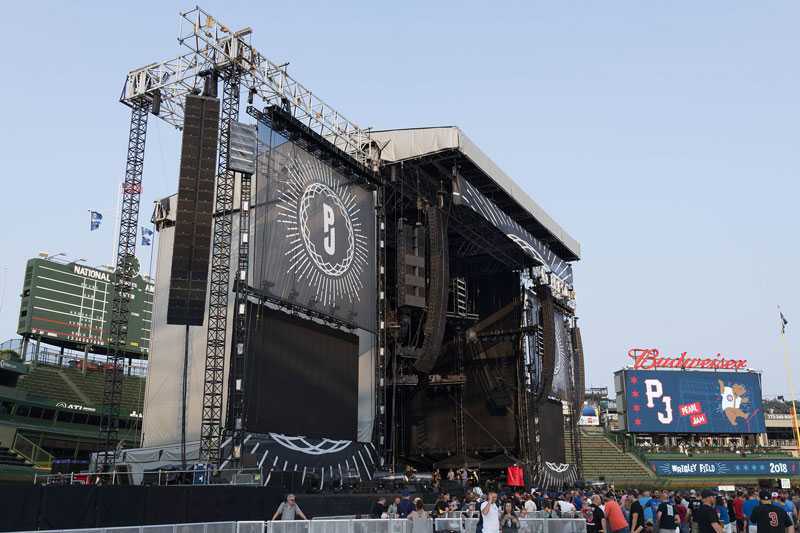Pearl Jam comes home for the homeless
- Details

Following Pearl Jam’s two sold-out Safeco Field Home Shows - the band’s first hometown Emerald City concerts in five years - the band donated $868,189 from ticket and merch sales to a variety of King County homeless-related organisations and service providers. Furthermore, this outpouring of generosity helped prompt philanthropic donations from other organisations ultimately totalling $10.8m, according to The Seattle Times.
Pearl Jam’s pair of Seattle shows followed tour legs in South America and Europe this spring and summer, and served as the kick-off for a subsequent three-city, five-date tour of Away Shows in major sports venues: Washington-Grizzly Stadium at the University of Montana in Missoula, Wrigley Field in Chicago, and Boston’s Fenway Park. Rat Sound Systems, the band’s long-time touring reinforcement provider, carried a full complement of L-Acoustics loudspeaker systems for the sold-out shows.
Rat Sound’s relationship with Pearl Jam goes back to the band’s debut album, Ten (1991), when it opened for one of Rat’s other long-time accounts, Red Hot Chili Peppers. Since then, the company has served as the group’s primary live production provider. Greg Nelson has been the man in the FOH mixing chair for Pearl Jam since 2004, when the band toured with its first V-DOSC system. In 2010, the band transitioned over to a K1 rig for the first time, which it has been using for tours ever since, including this recent run.
“K1 has a very pleasant, warm sound - even flat with no EQ modifications,” says Nelson, who mixed the shows on a DiGiCo SD5 console equipped with new 32-bit input cards. “I might make a few minor tweaks here and there, but the system makes it very comfortable for me to get the mix I want. L-Acoustics’ LA Network Manager software is part of that. It’s a well laid-out and easy-to-use tool that allows me to put the same sonic characteristics up in the nosebleed seats as we’re getting at front-of-house and down front.”
The standard show setup for the US outdoor stadium shows featured left and right main arrays of 16 K1 with six K2 down-fills flanked by two identical out-fill arrays. Low-end punch was delivered by dual hangs of eight KS28 subs in cardioid mode, flown adjacent to the two main arrays, and bolstered by 40 ground-stacked KS28 arranged in ten cardioid stacks of four.
Front-fill was achieved by a combination of double- and triple-stacked Kara enclosures positioned atop ground-stacked subs, plus four ARCS II in a horizontal array under each main K1 hang. Stage side-fills were comprised of left and right hangs of four K2, while audience delays consisted of four arrays of 12 K2.
Nelson is also quick to compliment the L-Acoustics team. “I really appreciate how well L-Acoustics supports its users,” he says. “I have a slew of people that I can call on literally any time with questions or concerns. They are always very responsive and really care about the people who use their systems.”
(Jim Evans)


















